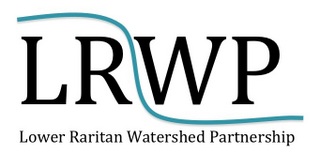Requesting a Value Engineering Session for City of Perth Amboy re: Long Term Control Plan
Dear Joel Rosa (City of Perth Amboy) & Susan Rosenwinkel (New Jersey Department of Environmental Protection) —
On behalf of the Lower Raritan Watershed Partnership (LRWP), I am writing regarding the Long Term CSO Control Plan (LTCP) for the City of Perth Amboy. The LRWP understands that the Perth Amboy City Council passed a resolution requesting that the New Jersey Department of Environmental Protection (NJDEP) table approval of the LTCP until exploration of alternative and lower cost options. The LRWP believes that the current LTCP does not adequately present the full array of low cost options for Perth Amboy’s CSO infrastructure, nor does it advance non-consolidated sewage treatment alternatives that may provide additional benefits to the municipality and its residents. As such, the LRWP supports Perth Amboy’s decision to table LTCP approvals, and furthermore suggests that you request a value engineering session to discuss possible alternatives to reduce the costs of the LTCP borne by the residents of Perth Amboy.
If the current LTCP were to be approved by Council, the City of Perth Amboy and City residents would no doubt serve as the example of “loser” in text books on who profits and who loses in regions with consolidated sewage treatment systems. The LTCP calls for Perth Amboy to receive a binding permit from NJDEP to construct improvements to its sewer system that are estimated to cost $380 million. This $380 million would be borne entirely by Perth Amboy, a city with a median household income of $49K, far less than the national average. These improvements do not include replacement of the failing brick sewer that travels from Perth Amboy through Woodbridge to the centralized Middlesex County Utility Authority (MCUA) treatment facility. That is, the rate increases projected in Middlesex County Utility Authority’s plan without the necessary brick sewer replacement indicates that Perth Amboy’s rates will increase from $330 per year to $1,540 per year by 2050. This quadrupling or more of rates will be devastating not only for the low income residents of Perth Amboy, but also the emerging Perth Amboy business community.
When it comes to our sewage treatment and water infrastructure our low income communities like Perth Amboy are the losers time and time again. Do you recall how, in 2012, 1 billion gallons of sewage overflow discharged from a sewage treatment plant into the Raritan River? This was a result of Superstorm Sandy storm-surge flooding that inundated centralized treatment facilities. Not only was this event devastating to the health of our waters, particularly the waters near Perth Amboy, but it demonstrated the vulnerability of our very costly and ill-conceived consolidated sewage treatment system.
The City of Perth Amboy and Perth Amboy Council have an opportunity to reassess commitment to consolidated treatment facilities, their potential for failure, their tremendous drain on local community finances, and the lost potential for local benefits (cost savings and energy production) to accrue via distributed wastewater treatment options. The LRWP has seen examples from around the world of successful distributed systems that yield tremendous benefits to their localities. We encourage the City of Perth Amboy to include in any value engineering session a careful examination of how “urban metabolism” of sewage can be leveraged via a distributed processing system to generate energy, restore waterways, and possibly lead to a more inclusive, cleaner economy.
Unlike consolidated systems, distributed wastewater treatment systems don’t risk the same type of regional ripples associated with failure. Fixes can be done quickly, and more cost effectively. Furthermore, distributed wastewater treatment can provide “clean energy” by treating and recycling organic waste where it is produced, generating low cost energy for the local community. The LRWP believes that distributed systems might just advance economic structural transformation across scales for cities like Perth Amboy, and empower the community in new ways. What this might look like on the ground is a system of distributed waste processing and power generation, along the lines of what was proposed a few years ago by the Charles River Watershed Association:
https://www.climatecolab.org/contests/2016/energy-water-nexus/c/proposal/1331631
Even if The City of Perth Amboy does not consider a distributed wastewater processing system, it should absolutely seek a value engineering for the LTCP as proposed so as to avoid perpetuating significant environmental justices in a community besieged by environmental injustices. We welcome the opportunity to discuss further.
Sincerely,
Heather Fenyk, Ph.D., AICP/PP
